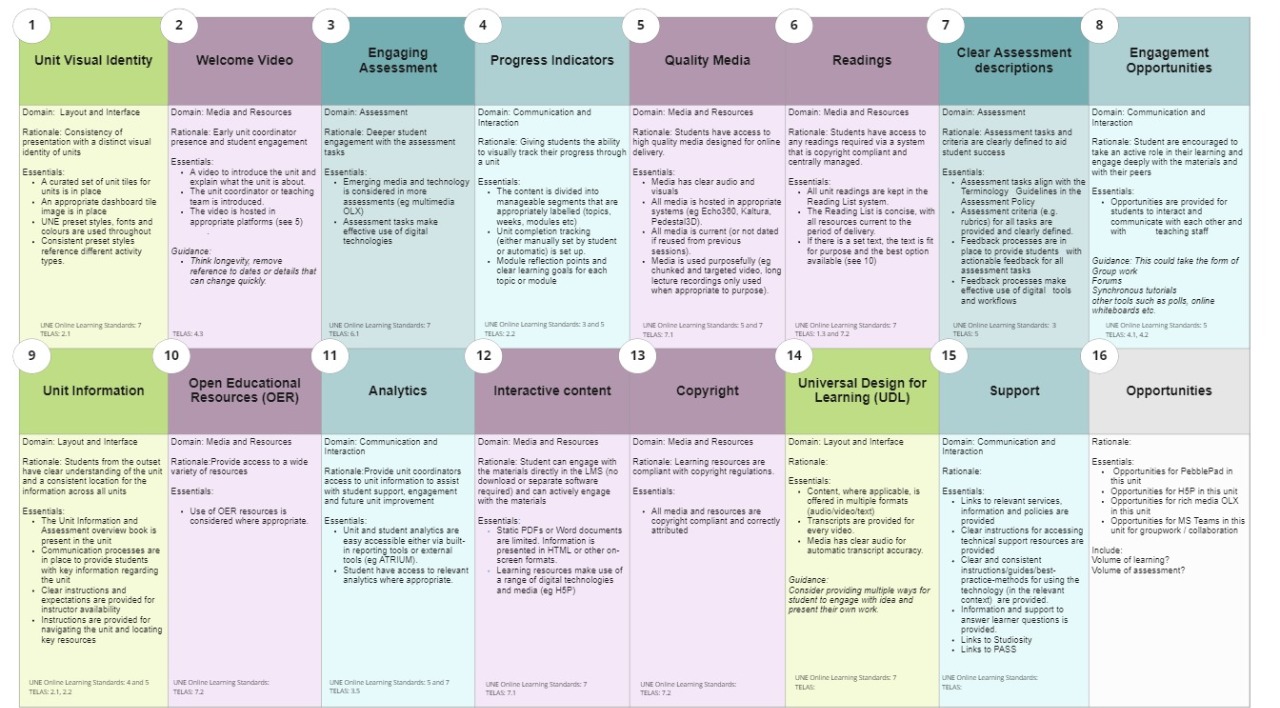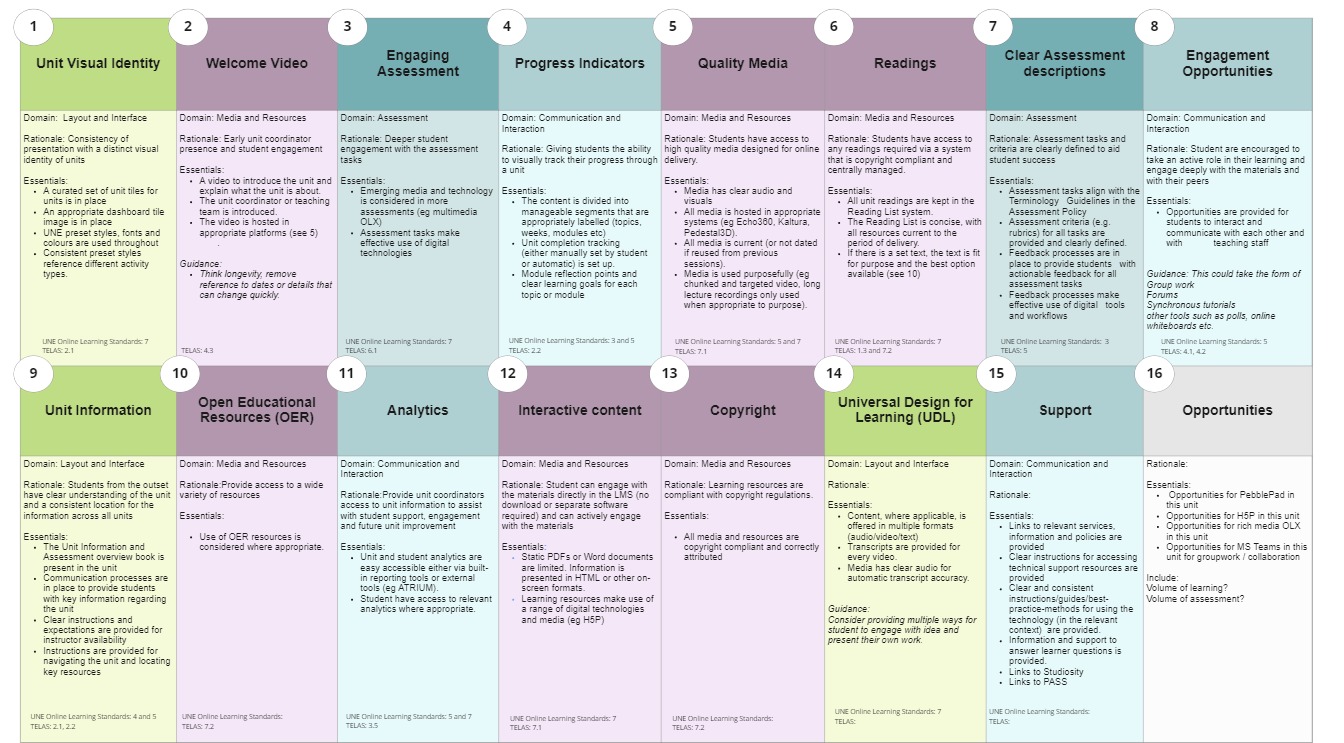

This element is about ensuring that all students can engage in learning in ways that maximise their success.
UDL focuses on changing the curriculum to enhance reducing barriers and extending opportunities, rather than focusing on individual leaners. This element highlights the role that the online learning environment plays in either supporting student success or acting as a barrier to learning.
Universal Design for Learning (UDL) is a set of principles for curriculum development that give all individuals equal opportunities to learn. UDL provides a blueprint for creating instructional goals, methods, materials, and assessments that work for everyone–not a single, one-size-fits-all solution but rather flexible approaches that can be customized and adjusted for individual needs.
The UDL principles are based on the three-network model of learning that take into account the variability of all learners—including learners who were formerly relegated to “the margins” of our educational systems but now are recognized as part of the predictable spectrum of variation. These principles guide design of learning environments with a deep understanding and appreciation for individual variability. (Centre for Applied Special Technology, n.d)
Ongoing developments and affordances of digital technology provide even more opportunity to apply the UDL principles in designing learning environments underpinned by providing with variability for learning.
UDL is not just about technology and the role of the teacher in the learning process provides further opportunities to enhance variability and respond to learner differentiation.
This element relates to the following research and practice informed guidelines/ frameworks:
TELAS Guidelines
UNE Learning Standards
Future Fit – Personalised Learning Journeys
Some things you can do include:
Maximising student success through Universal Design for Learning (UDL). Digital Education @ UNE Blog and Webinar recording
Teaching Online @ UNE contains information on assessment design.
Contact the Learning Design team for specific unit related guidance and advice: learningdesign@une.edu.au
Student Accessibility & Wellbeing Office
TELAS Framework https://www.telas.edu.au/framework/
UNE Online Learning Standards: https://myune.sharepoint.com/sites/academic-transformation/SitePages/Principals-for-Designing-Learning-Experiences-Online.aspx
Domain: Layout and Interface
Rationale: All students can engage in learning in ways that maximise their success
Essentials:
Guidance: Consider providing multiple ways for student to engage with idea and present their own work.
Standards: